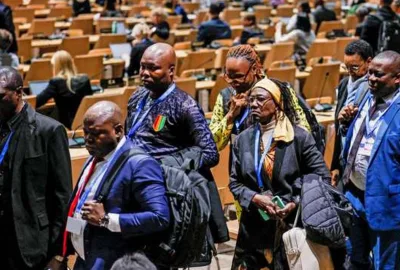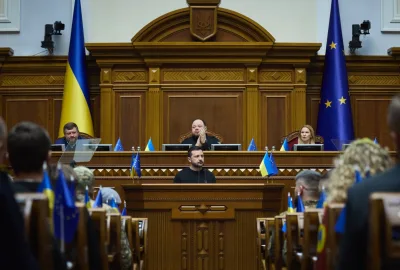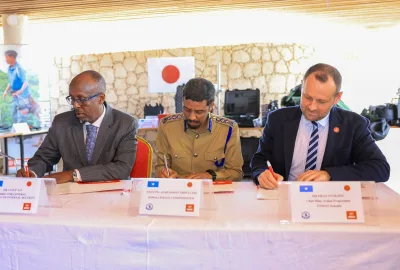Somalia is no stranger to militant attacks, but the brutal assault that left at least 25…

Somalia is no stranger to militant attacks, but the brutal assault that left at least 25 people, mostly civilians dead at the popular Mogadishu Lido beach on Thursday evening sent shock waves through the nation. It will go down to be one of the darkest dates in the history of Somalia. The height of extremism, level of cruelty and the worst of terrorism was witnessed on that night.
Words fail to fully convey the horror that was perpetrated at the beach. How could people calling themselves Muslims shoot and kill dozens of innocent ones in cold blood? The killings have shocked Somalis of all strata of society that usually greet such atrocities with a shrug and a yawn.
Lido beach, located in the Northern part of the city is usually crowded on weekends – Thursdays & Fridays – with families enjoying the beach, playing football or swimming in the Indian Ocean waves.
A wedding ceremony and private graduation party was due to take place at one of the beach side restaurants.
Eight heavily-armed gunmen disguised as security forces– wearing military uniforms – stormed the beach while hundreds of people were having quality time by the beach side after a long week of duties and studies. According to survivors, the team of attackers besieged one of the beachfront restaurants with heavy weapons, with some of the assailants wearing vests laden with explosives. Security forces surrounded the restaurant shortly, but proceeded cautiously to try to prevent a bloodbath, according to officials.
‘’They started shooting indiscriminately, many people managed to escape by jumping over the barbed wire fence while others sought refuge in the water,’’ said Abdi Hassan, who is still coping with trauma.
It took 10 hours for the Somali Special Forces to end the siege, rescuing more than 50 people who had been taken by the militants as hostages. When the siege ended, Somalia’s Minister of Security claimed that the mastermind of the attack was captured by the security forces, saying: ” He was the organizer of at least two other attacks.”He did not give further details.
Moments after the attack, a pro-al Shabaab website claimed that the group had launched the assault without giving further details. Neither the group officials have spoken since after the massacre.
The motive of the attack is still unclear.
The militant organization has a history of attacking other places, but the unprecedented scale this time has raised the question of why the group uses such a horrific tactic. But turning to “soft targets” is often regarded as evidence of weakness in extremist groups.
It is difficult not to wonder: why? Why did the group launch this brutal attack, and why did it choose to murder civilians who were having a break?
The vast majority of terrorist acts are not committed by literal madmen who don’t know right from wrong. To the contrary, most terrorists think that their actions fit into a moral schema, and that they are thoroughly justified by some combination of politics and theology.
For a terrorist organization, attacks on hard targets, such as heavily guarded government buildings and military installations, produce greater effects from the political and ideological point of view. Assaults against soft targets, not a first choice, indicate that the power of the group has declined.
Family members killed
Friday was a hard day to absorb the news. Three members of the same family were among those killed in the deadly attack.

Abdiqani Mohamed Kheire, 24, Fardowsa Mohamed Kheire, 22, and their younger sister, Naima Mohamed Kheire, 15, were among the innocent lives taken away in this act of unprecedented savagery. But their niece, daughter of Fardowsa was fortunate to have not been shot by the militants.
Fardowsa Mohamed Kheire, a final year nursing student, yelled at one of the gunmen, telling him “I am pregnant, don’t kill my baby,” said her brother who spent the whole night waiting for the fate of his siblings. Pictures of the attack’s aftermath showed her and other siblings lying on the beach sand next to each other.
‘’I don’t know why they have killed my siblings and what wrong they have committed or done to them? They were just ordinary people who never worked with the government,’’ said tearful Abdifatah Mohamed Kheire, who went to carry the bodies of his siblings after the siege ended.
‘More attacks’
Al Shabaab insurgents have staged a string of assaults in their fight to overthrow the country’s internationally-backed government. They have targeted hotels, the international airport, Villa Somalia, a United Nations compound and restaurants in a bid to discredit claims by the authorities and AU troops that they are winning the war.
Since last year, al-Shabaab seems to have increased attacks on soft targets –hotels, restaurants – in Mogadishu. After visiting the scene of the attack, Somalia President Hassan Sheikh Mohamoud said that the militants are so desperate and will carry out more attacks on public places.
‘’They are in a very desperate situation and they will carry out attack on civilian areas such as schools, markets and mosques.’’
The question is that has/will the government set strategies to stop any upcoming attacks planned by the extremists in public places?
Security analysts believe that al-Shabaab will likely continue its strategy of attacking ‘soft’ government or civilian targets. Its objective is to try to build up a critical mass of public opinion with enough such attacks to force the offensive against them, which would enable them to re-establish themselves in their strongholds in parts of Southern Somalia.
Sense of solidarity
All tragedies provoke emotional exhortations. For now, the attack has brought in a rare display of unity in a sorely politically divided country.
In a sign of defiance, Somalis inside and abroad took to social media such as Twitter to condemn the terror attack, using the #TweetLiidoPictures to spread messages of hope, sympathy and solidarity.
The hashtag started trending on the popular microblogging site hours after the attack. Some posted the pictures of the victims, by paying tribute to them.
The one place I could always feel at ease with family and friends. #tweetliidopictures pic.twitter.com/fy4IceSjJ3
— Iman Elman (@Imaan_Elman) January 22, 2016
#LidoBeach a symbol of hope, am going there to play football and to take the fresh air ☺☺ #TweetLiidoPictures pic.twitter.com/IB2XLNTXIs
— Ibrahim Adow (@cadow10) January 23, 2016
https://twitter.com/Gobanimodoon/status/690887216801943552
Many others also shared messages to encourage their fellow citizens to stand up bravely against acts of terror.
‘’They want to stop us from going to the beach and enjoying life there. It is something we will never accept absolutely!’’ said Omar Ahmed, a regular beachgoer.
This cruel incident was an eye opener for the whole nation, not only the struggles of removing terrorism should be increased but an insight for preparation of a better Somalia was enumerated in the hearts of people of Somalia.
Following the Liido carnage, there has been palpable rise in public anger against the al-Shabaab. People want the terrorist menace to be dealt with firmly. Television stations are constantly talking about the massacre and how to deal with those responsible. Much is also said about what happened and how.
However, If religious extremism can successfully storm such a popular place, the question without an easy answer is whether hope is fading and hopelessness is staging a comeback in Somalia’s capital.
Analysts claim that the growing strength of insurgents in Mogadishu is due to the slow response of the Somali government and lack of professional military with counterterrorism units, robust intelligence-gathering and sharing initiatives.
The Federal government and its partners should have, by now, put into place a comprehensive action plan to save a conflict-ridden country from being falling into an existential crisis.
Following the widespread public outrage, people hope that this attack may signal a decisive turn in Somalia’s reluctance in taking the menace of extremism head on.
Given the history of Federal government responses to equally deadly attacks in the past, such a hope may be a little too optimistic.
Hussein Farah
Horseed Media







